Fantasy Baseball: National League LABR Auction Recap

Following up on our coverage of the AL version of fantasy baseball’s highest profile auction, here’s how the NL LABR version broke down.
One night after the League of Alternative Baseball Reality (LABR) held its annual American League draft, it was the National League’s turn to take the fantasy baseball spotlight. The rules are the same, but the different player pool makes it a whole different ballgame.
As with the American League, this league is comprised of 12 teams owned by experts from around the industry. There is some overlap between owners in AL LABR and NL LABR. The rosters still have 23 players (14 hitters and nine pitchers), and teams still accumulate stats in the standard five hitting and five pitching rotisserie categories.
The same auction format is used for the National League as for the American League. $260 to spend on the 23-man active roster with a six-round supplemental draft immediately following. The variance in the player universe can make for some interesting shifts in strategy, though.
There are more stolen base threats in the National League, so they may draw less of a premium in the National League than in the American League. But the most significant difference is that there are fewer full time hitters in the NL due to the lack of a DH. While I’ve always found pitchers hitting to be incredibly boring, this difference is what actually has increased my appreciation for the designated hitter. If the National League ever adopts the DH, fantasy baseball may be part of the impetus for change!
In the American League you have 135 hitters in the lineup on any given day (15 teams with nine spots). In the National League you have just 120 hitters (15 teams with eight spots, as pitchers’ offensive statistics don’t count in fantasy) and a bunch of pinch-hitters. Both LABR leagues require 168 hitters (12 teams with 14 spots), so utility players who may not play every day are more likely to be present on NL fantasy rosters than on AL fantasy rosters.
Because of this, a stars and scrubs approach may be more viable in the AL than in the NL. You are more likely to find starters for a few dollars in the American League than in the National League, so it may be a better idea to create a more balanced lineup in the National League, or to divert some more of the budget to hitting from pitching.
Sure enough, where $975 (31.3%) was spent on pitching in the American League LABR auction, only $894 (28.7%) was spent on pitching in the NL auction. That’s not to say money wasn’t spent on top-end National League pitching: Clayton Kershaw drew the highest bid at $44. Once again, the results of the auction can be found online, so feel free to peruse the complete results as we examine some trends.
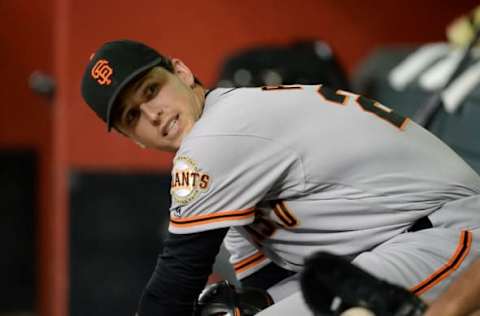
Catchers
Not surprisingly, Buster Posey was the class of the catching crop, going for $25. The next two highest catchers ended up on the same team, with Willson Contreras and J.T. Realmuto getting scooped up for a combined $34.
While two American League teams ended up with a pair of $1 catchers, the minimum spent on a catching tandem in the National League auction was $4. The NL spending was more spread out, with seven catchers reaching double digits and four $1 catchers, compared to the AL, which had eight with bids of $10 or higher but six $1 picks.
The same team that picked up Cameron Rupp for $9 hedged his bet with prospect Jorge Alfaro at $1. While the catching situation in Colorado is still somewhat unclear, the league of experts certainly think Tom Murphy’s bat will eventually prevail over Tony Wolters. Murphy went for $10, while Wolters was scooped up for just $3.
One owner actually used his utility slot to draft a third catcher, ending up with Murphy, Tyler Flowers ($5) and Devin Mesoraco ($4). This should provide ample opportunity to turn a profit with a trade, as having three starting catchers is more likely to turn a profit if one is flipped on the trading block.
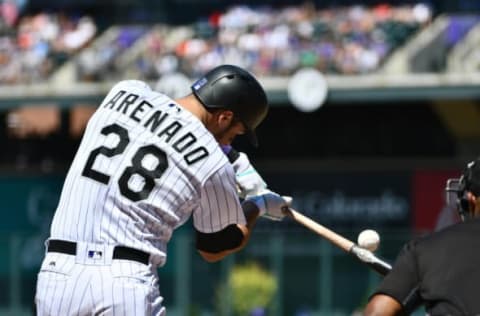
Corner Infielders
First base is incredibly deep in the National League, with 10 of 12 teams plunking down at least $18 for their first baseman, and 12 eclipsing that total in all if you include Daniel Murphy and Matt Carpenter who have eligibility at other positions. Even Eric Thames, who hasn’t appeared in the majors since 2012, went for $22 after several great seasons in Korea. Paul Goldschmidt, who provides tremendous value with his stolen bases at a power position, easily paced the way at $38, while Anthony Rizzo ($33) also eclipsed the $30 barrier.
Third base was not quite as deep, with only nine players going for $18 or more, including Carpenter, Javier Baez and Jonathan Villar. There is definitely superstar production at the top, though, with Nolan Arenado ($38) and the power of Coors Field barely eclipsing reigning NL MVP Kris Bryant ($37).
There weren’t many surprises on the corners, but one player that stands out is Josh Bell. Bell, who barely ended 2016 with his rookie status still intact, went for an intriguing $19. Meanwhile, Justin Bour, who has a longer track record with a slightly lower average but considerably more power, went for $15. There weren’t a lot of bargains to be found, and with the exception of a possible overspend on Bell, the NL LABR prices should be an excellent barometer of what you can expect to pay for corner infielders in your auctions this month.
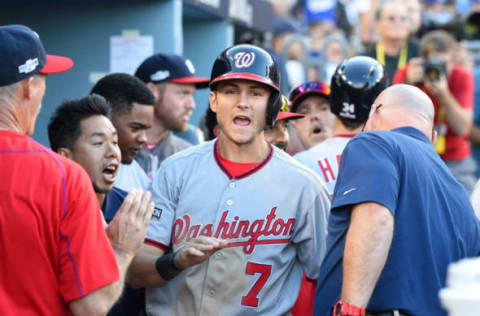
Middle Infielders
It’s Trea Turner and everyone else at second base in the National League. At $34, Turner was a full 36 percent more expensive than the next highest bid on a 2B-eligible player (Matt Carpenter, $25). Bidding on last year’s other hot rookie, Corey Seager, also reached $30 on the other side of the diamond at shortstop. Each player could easily turn a profit if they are able to build upon their success in their sophomore campaigns.
There were more value buys up the middle than on the corner infield positions. Dansby Swanson, who is certainly an early favorite for Rookie of the Year, went for $17, or $2 less than what Josh Bell went for. Swanson shouldn’t have much trouble outproducing Bell, and he’ll do it at a premium position. Brandon Crawford is best known for his defense, but he’s a solid fantasy shortstop as well. Last season he set or matched career highs in average (.275), RBI (84), runs (67) and steals (7). The Giants will keep running Crawford out every day, and he’ll keep hitting in RBI situations. $13 is a sneaky good deal, and the same team who got a good deal on Swanson got a nice pickup in Crawford.
There are a couple of multi-position players I want to touch on. Both are eligible at second, third and short. First is Jedd Gyorko. Keep an eye on the competition for Cardinals third baseman. Gyorko popped 30 home runs last year in a utility role, and regular playing time could lead to premium power production out of a middle infield slot. $13 could be a great buy if Gyorko beats out Jhonny Peralta.
On the other hand you have Javier Baez. Baez needs an injury ahead of him to be a regular. Addison Russell isn’t moving from shortstop. Ben Zobrist and Kris Bryant should stick at second and third, respectively, now that Kyle Schwarber is healthy and able to play left field. Baez certainly could provide solid numbers in a super-utility role, but without consistent playing time it’s hard to see him surpassing in value the $22 he sold for.
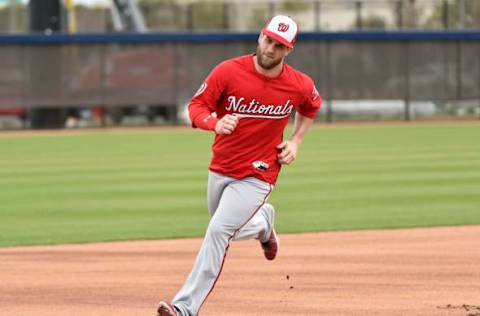
Outfielders
The outfield is incredibly deep in the National League, as evidenced by LABR owners filling their OF spots with 21 players going for at least $20. By comparison, this is 50 percent more than what we saw in the American League, and doesn’t even include infield-eligible Trea Turner, Kris Bryant and Jose Peraza. All three Pirates outfielders went for at least $25! There’s no Mike Trout or Mookie Betts in this group, but the memories of 2015’s MVP season catapulted Bryce Harper to a $35 winning bid.
Ryan Braun ($31) and Charlie Blackmon ($30) followed Harper. Three teams left the draft with 60 percent of their outfield making $20 or more. Expect to pay full value at the top for outfielders in your NL auctions this season. Think you can get Harper, Andrew McCutchen ($25), Kyle Schwarber ($21) or David Peralta ($17) on the cheap following disappointing or injury-plagued seasons? Not if LABR is any indication.
If you want to get value, you’ll have to find it at the lower end. If there’s a clear winner in the competition for Cubs center fielder, either Albert Almora, Jr. ($2) or Jon Jay ($1) could provide sneaky value. One of the most intriguing buys was Angel Pagan for $1. Pagan remains a free agent, but he’ll be showcasing what he’s got left in the tank for Puerto Rico in the World Baseball Classic. Pagan can still hit for average and steal some bases, and he even set a career high with 12 home runs in 2016. If he lands in the right situation he can certainly turn a tidy profit.
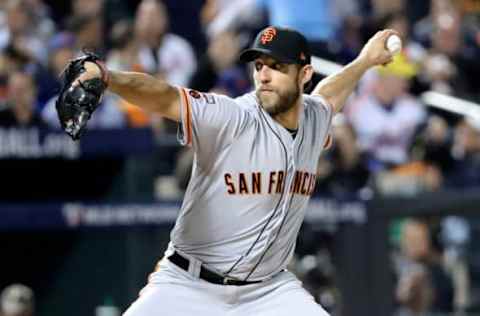
Starting Pitchers
As mentioned earlier, quite a bit less money was spent on pitching in the National League than in the American League. But where the AL auction only saw two $30 pitchers (landing on the same team, no less), the NL auction had three: Clayton Kershaw ($44), Noah Syndergaard ($31) and Madison Bumgarner ($30). Reigning Cy Young winner and strikeout king Max Scherzer was only fourth-highest at $28.
The willingness to spend on top starters combined with low overall spend on pitching meant there were definite values for mid-tier pitchers. John Lackey has been very steady over the past four seasons as he continues to defy age. Even at 38, $11 seems low. The Phillies rotation was undervalued across the board. Jeremy Hellickson ($5), Aaron Nola ($12), Jerad Eickhoff ($9), Clay Buchholz ($5) and Vince Velasquez ($8) can all conceivably return double their auction price.
On the other end of the spectrum, I think the bids on the top two Dodgers starters (made by the same team) were a bit aggressive. Kershaw will be worth his price tag only if he makes every start and pitches at his max potential. I’m not betting against that, but I’d be quite hesitant to go to $44 on a player who missed a good chunk of time last year. Rich Hill ($20) has real injury concerns. He turns 37 this week and last season’s 20 starts was the second-highest total of his career.
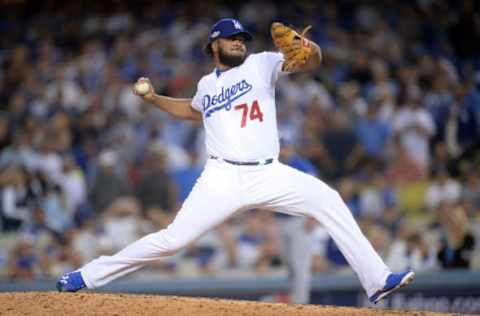
Relief Pitchers
Kenley Jansen easily paced the field among relievers with his $22 price tag. Only Mark Melancon ($17) and Seung Hwan Oh ($16) joined him in earning bids exceeding $15. My personal auction experience comes in a 4×4 format where the value of saves and thus prices of closers is hyperinflated, but even considering this, relief pitchers seemed to be a bargain across the board.
As in the American League, the NL LABR auction provides insight as to how the fantasy baseball experts envision various closer battles playing out. In Pittsburgh, Tony Watson ($11) appears to be the clear favorite over Daniel Hudson ($1). Hudson won’t be the primary closer to start the season, but he’ll grab a handful of chances when Watson is unavailable and could certainly move into the role if Watson gets dealt midseason. Hudson is a definite bargain here.
The market seems to favor incumbent closer Brandon Maurer ($7) over fireballer Carter Capps ($3) in San Diego. Whoever wins the job will be an excellent value. A closer on a bad team can still rack up a good amount of saves, as the games bad teams win are unlikely to be blowouts and will thus still provide save opportunities. Meanwhile in Colorado, Adam Ottavino ($7) remains the favorite for saves as the Rockies bring newcomer Greg Holland ($2) along slowly.
Looking at rosters as a whole, whereas I saw the defending AL LABR champion as a potential favorite again this season, I think Derek Carty’s roster in the NL has quite a few holes. This race appears wide open.